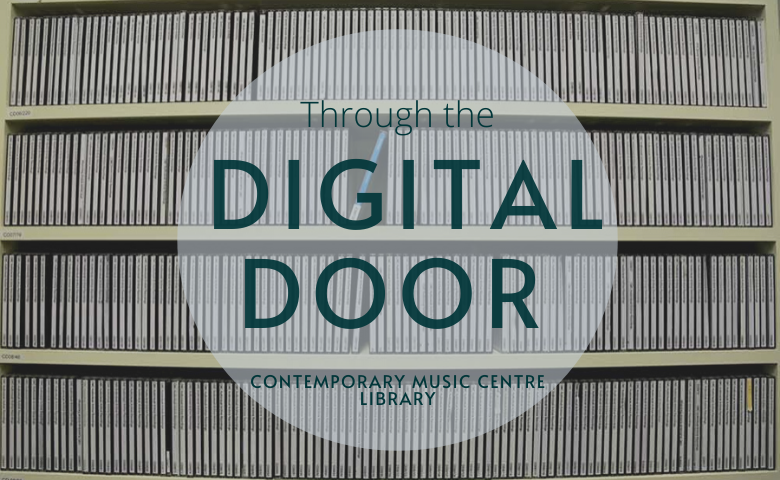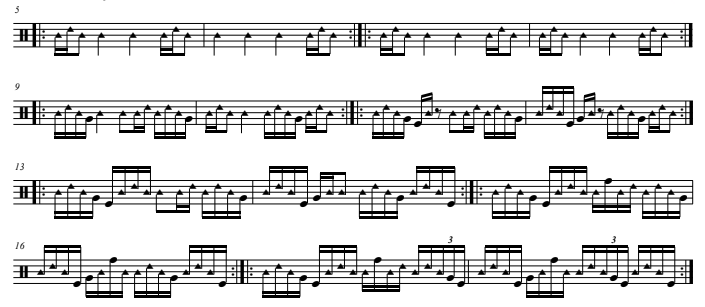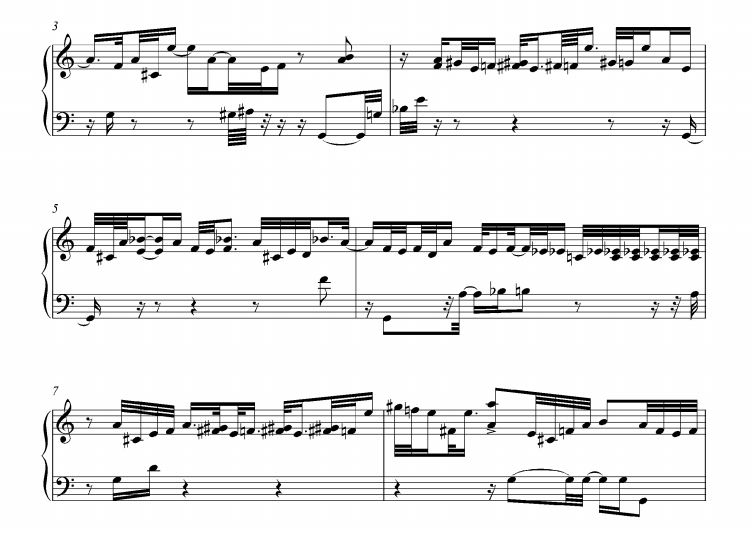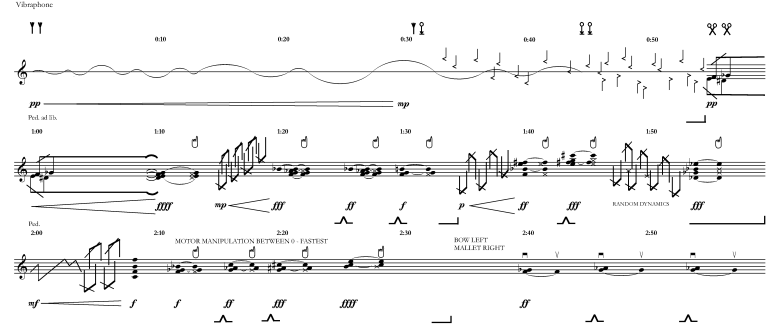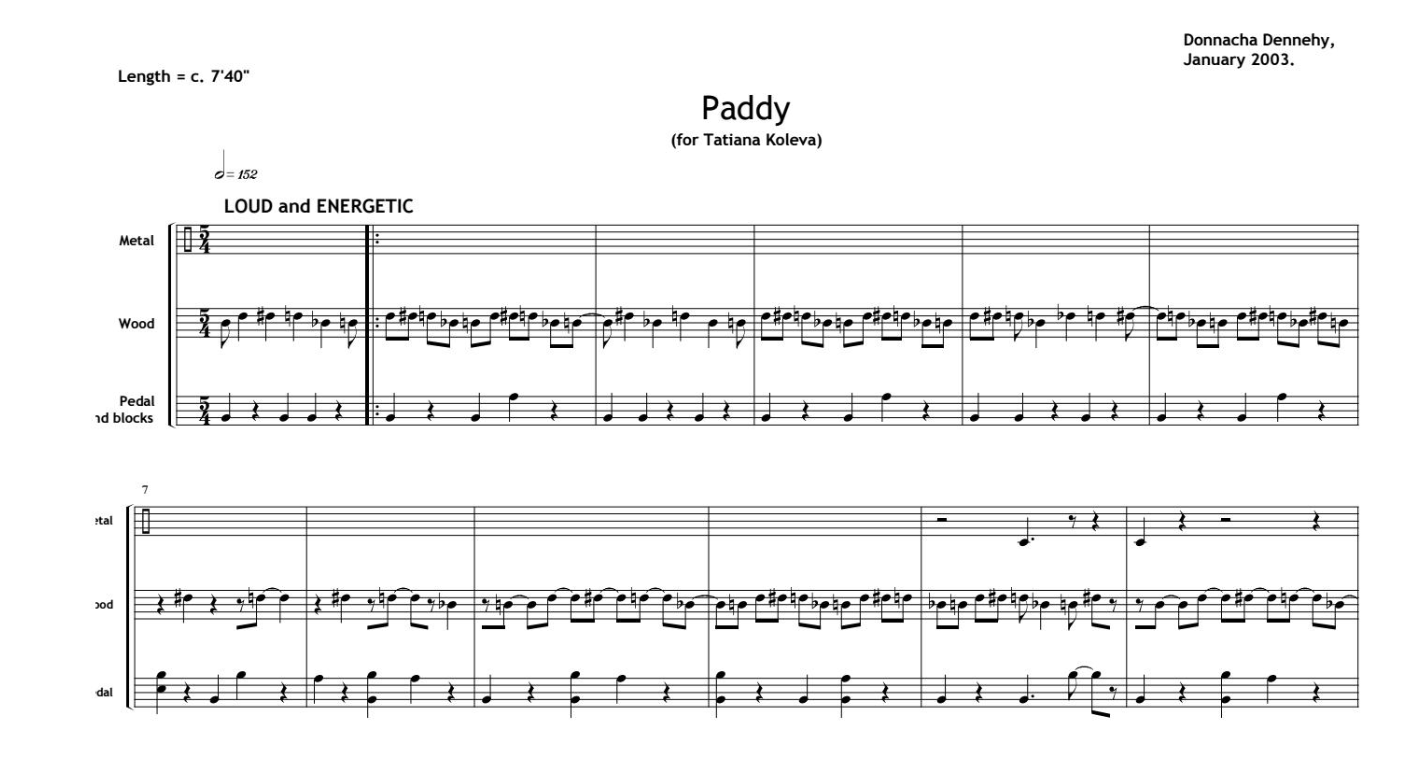Through the Digital Door: Percussion works in CMC's library
This week's 'Through the Digital Door' focuses on work for percussion instruments. These six highlighted works include pieces for both pitched and unpitched percussion, from the broad selection in CMC's Library. Though currently closed to the public due to Covid-19 restrictions, library services and research facilities are still being provided remotely. Contact Library Co-ordinator Susan Brodigan with any enquiries on sbrodigan@cmc.ie.
Tom Lane Beats, Bells and Bridges (2016) 50' for percussion
This is a site-specific work performed over three different locations in Cork City by Alex Petcu (percussion) and Brian O'Regan (church bells). It was premiered as part of Cork Midsummer Festival in 2016. The work is divided into three movements and described by the composer as follows:
Beats: an acoustic exploration of University College Cork Quad
Bells: a duet between marimba, bell plates and the Shandon bells of St. Anne's Church
Bridges: plays the Mardyke bridge and transforms it into an instrument"
Ian Wilson Verschwindend (2001/2003) 5' for solo marimba
This work was originally written for piano and commissioned by the Axa Dublin International Piano Competition by RTÉ lyric fm. Verschwindend was later adapted for solo marimba, and is published by Universal Edition. The work's programme note gives some insight into the work:
Verschwindend means 'dying away' in German, and it is this idea of a marked and consistent decrease in dynamic over the length of the piece that gives it direction. Based on an improvised phrase, the work constantly varies its basic material, like looking at an object from many different angles.
Listen to a recording of the piano version of this work by Matthew Schellhorn below.
Judith Ring Per_form (2007) 9' for vibraphone and tape
This work was composed for percussionist Damien Harron, as part of the composer's PhD portfolio.
The live part involves the use of unusual implements such as milk frothers, ball chains and cluster sticks to produce interesting timbral effects on the bars of the instrument. This also adds a theatrical element to the piece that provides an exciting and energetic edge to the performance. The tape part is composed of samples from a range of percussive instruments.
Donnacha Dennehy Paddy (2003) 8' for percussion
This work is scored for one or more percussionists, for metallic and wooden surfaces. Paddy was premiered by Tatiana Koleva in 2003 and is published by G. Schirmer.
Finola Merivale falling flames (2013) for variable ensemble, open duration
This work can be performed by any solo instrument or any ensemble in which the collective range covers C2 to C7. It was composed for the Irish Composer Collective's Composer Series, and premiered in December 2013 by percussionist Alex Petcu on marimba. The composer gives some insight into the work in her programme note:
falling flames comes from the phrase “burning the candle at both ends”, as it was written during an incredibly stressful and busy period. The concept of time was therefore occupying my thoughts, and became an important subject in the piece. As the piece gradually falls through the various registers, the energy changes from fast-paced semiquaver repetitions to slower passages with more space, allowing the music to resonate. This corresponds to an idea of somebody losing steam and running out of energy. However, as the music reaches its lowest register it becomes much more peaceful, as the end of this particularly busy time is in sight for me.
Yet in this hectic world, circumstances can cause any peace to come to a sudden end and throughout the piece, the performer has the freedom to jump backwards to a previous passage, jolting the listener back into an earlier frenzy. Like many of my pieces, the performers’ autonomy is an important element as they also choose how often each measure is repeated.
Kevin Volans She Who Sleeps with a Small Blanket (1985) for percussion 16'
Premiered in 1985 by Robyn Schulkoswky, this work is published by Wise Music Classical. The work was written as a composition study by the composer as well as a virtuoso showpiece for the performer.
In concerts of music involving ‘talking drums’ we are often told that the drums are supposed to relay a message. Why, I wonder, are we told this? Should we listen to the music differently, hoping to understand some message? Or are we trying to appreciate the sounds as absolute music, overlooking any important news they may be conveying? And what of the performer energetically sending out messages which he knows are not being understood?

